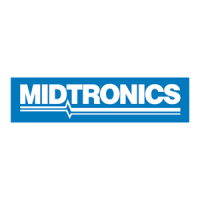• 25 •
Notes:
• The fi rst time you turn on or connect the Celltron ULTRA, it will display a reminder to set
preferences for the temperature units (Celsius or Fahrenheit) and the jar and string WARN/
FAIL thresholds. Although you can press the
BACK key to bypass the message, it will continue
to appear until you change or accept the default settings.
• To protect its circuitry, the analyzer will not turn on if the clamps/probes are connected in
reverse polarity (red to negative, black to positive).
• Power outages can affect test results. Do not test the string if a power outage occurred
recently and the string is boost-charged.
• If the last fi le created, opened, or used does not match any fi les on the memory card, the
analyzer will beep and display FILE NOT FOUND. The analyzer’s internal EEPROM memory
stores the last test used. When the analyzer powers on, it looks for the last fi le used on the
memory card. To prevent the message from reappearing, insert the card containing the fi le,
open an existing fi le, or create a new fi le on the card.
Testing a sample of jars
1. Choose at least 30 jars from one manufacturer with the same make, model, power rating, age
(within 6 months), and service history.
2. Record this information about the jars:
• Jar manufacturer
• Model number
• Date of manufacture
• Date of installation
• Condition in which the jar operates, such as charge voltage (volts per cell), temperature,
and DC current through the jar
• Visible warnings, such as leaking acid, corrosion, or distorted jar cases
3. Test the jars. See Chapter 6: Testing.
4. Test one jar fi ve times in a row on fl oat charge. Conductance results should be within ±
2% of
each other.
NOTE: If the test results do not conform to this pattern, an electrical signal might be present
in the system.
5. Calculate the average conductance of the jars. Do not include jars that are higher or lower
than 30% from the average because they might be outside an acceptable range.
Using the average in STRING SUMMARY
If you cannot obtain a reference value for a string, test the string and use the average conductance
value (AVG. MHOS) in the STRING SUMMARY as your reference value. If jars in the string have
been replaced recently, test the new jars, especially if they correlate to the HIGH jar value in STRING
SUMMARY. For more information, see Chapter 7: Test results.)
Chapter 3: Determining a reference valueCelltron ULTRA

